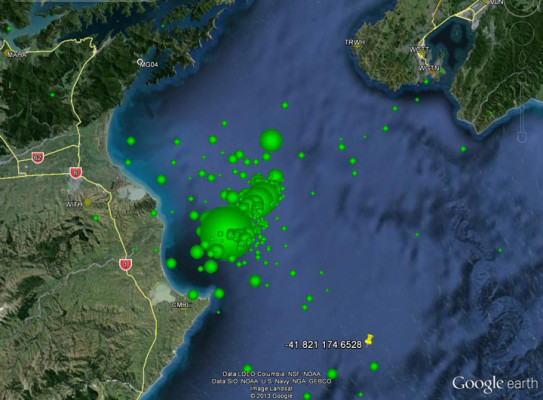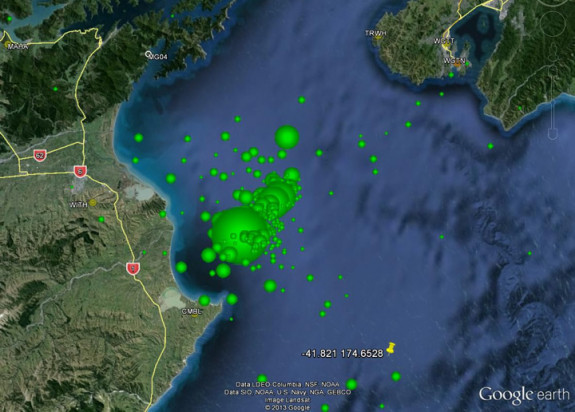Preliminary science from the Cook Strait earthquakes

There has been continuing seismicity in the Cook Strait area today, with the latest and largest earthquake (as at 9 pm on Sunday 21 July) being of magnitude 6.5, which generated shaking of up to 21% g (or about 1/5 of the force due to gravity) at Ward, and 16% g (or about 1/6 of the force due to gravity) at Picton.
The period of seismicity began with a M5.7 on Friday morning(external link), just after 9.00 am. This evening’s M6.5(external link) was in a similar location to the previous earthquakes and was caused by similar stresses as the previous greater than M5.0 earthquakes. However, initial indications are that whereas the earlier events were dominated by thrusting motion (one plate riding over another), the M6.5 was dominantly transverse (side-to-side) movement. Crustal events typically have extended aftershock sequences and more felt earthquakes are expected.
GNS Science believes the sequence is in the overlying plate, above the subduction interface. In this area, the Australian plate overlies the subducting Pacific plate at a depth of about 25km. Many crustal faults have been mapped in the area, however the exact fault(s) upon which the events have occurred is yet to be determined.
Through the weekend, the seismicity has moved to the southwest. This migratory behaviour is commonly seen in seismic swarms and is typically believed to result from the outward transferring of stress from the earlier events to the later ones. Historically, the region has seen other seismic swarm activity. Most recently, in 2005 a series of four earthquakes greater than M5.0 occurred about 10 to 15 km to the southwest of the current swarm. The 2005 earthquakes caused no damage.
Statistical analysis of the sequence to date provides estimates of the probability of future earthquakes in central New Zealand. GNS Science estimates that in the coming week there could be up to nine M5.0 or greater events, with an approximately 30% probability (1 in 3 chance) of a M6.0 or greater. The most likely period for this to occur is the next 24 hours, when the probability is approximately 20% (1 in 5 chance).
Earthquakes less than magnitude 7.0 do not usually generate a tsunami; however, it is possible for undersea landslides triggered by earthquake shaking to produce a tsunami. The impact of these types of tsunami is usually confined to the coastline close to the earthquake epicentre, and would reach the coast within 10 to 20 minutes following the earthquake.
